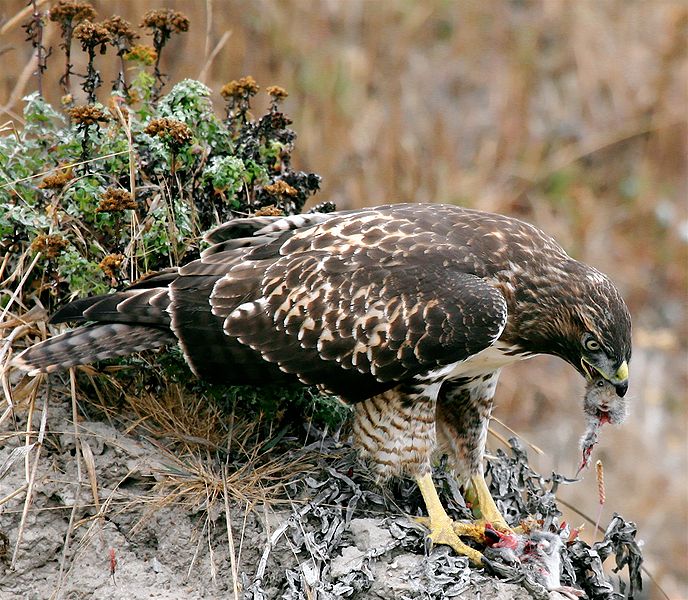
Interactions
Because Microtus californicus is a small rodent, it makes for
an easy target of many predators. They play a key role in the
food web which is known as being a keystone prey species. This
is because their populations are generally high in density and
they reproduce rapidly (ADW 2002). Large mammalian predators
have been found to greatly reduce populations of M. californicus
by 88% in a given cycle of reproduction (Cudworth and Koprowski
2010). One explanation as to why mammalian predators like feral
cats and coyotes are such successful predators when compared to
avian predators like hawks and owls is the amount of vegetative
cover that shields M. californicus. It was also found that
though this species is heavily predated, mammalian and avian
predators do not play a role in the major decline in vole
numbers between breeding seasons (Baker and Brooks 1982). Some
major predators include:

· American
Kestrel
· Harrier Hawk
· White-Tailed
Kites
·
Red-Tailed
Hawk
· Barn Owl
· Great Horned
Owl
· Long-Tailed
Weasel
· Coyotes
· Grey Fox
· Multiple
species of snakes
· Herons
· Egrets
·
Feral Cats
Not only is M. californicus prey to much larger animals, but is
also greatly known to be a carrier to many transmittable
diseases, endoparasites, and ectoparasites (Cudworth and
Koprowski 2010, ADW 2002). These include:
· Sin Nombre
Hantavirus
· Isla Vista
Virus
· Plague
· Granulocytic
anaplasmosis
· Tularemia
·
Lyme Disease
· Pneumocustis
carnii (pulmonary fungal parasite)
· Chrysosporium
(lung parasite)
· Hepatozoon
(protozoan)
· Lice
· Fleas
· Ticks
· Mites
.jpg)
With regards to humans, M. californicus is widely known to be a
pest in gardens, agricultural fields, vineyards and
orchards affecting the growth of vegetation and damaging the
land, bark and roots of plants (Cudwork and Koprowski 2010). The
most severe damage to pastures and croplands occurs when
populations of M. californicus is at very high densities.
However, M. californicus tends to avoid already heavily
grazed grasslands and mowed fields (Batzli and Pitelka
1970). Typical plants that these voles consume and damage
include
artichokes, beets,
carrots,
potatoes, lilies and
dichondra. They also damage the bark of many fruit trees by
gnawing at the base of the trunk either just above or below the
ground (Salmon and Gorenzel 2012).
Next, read some Fun Facts about the California Meadow Vole.